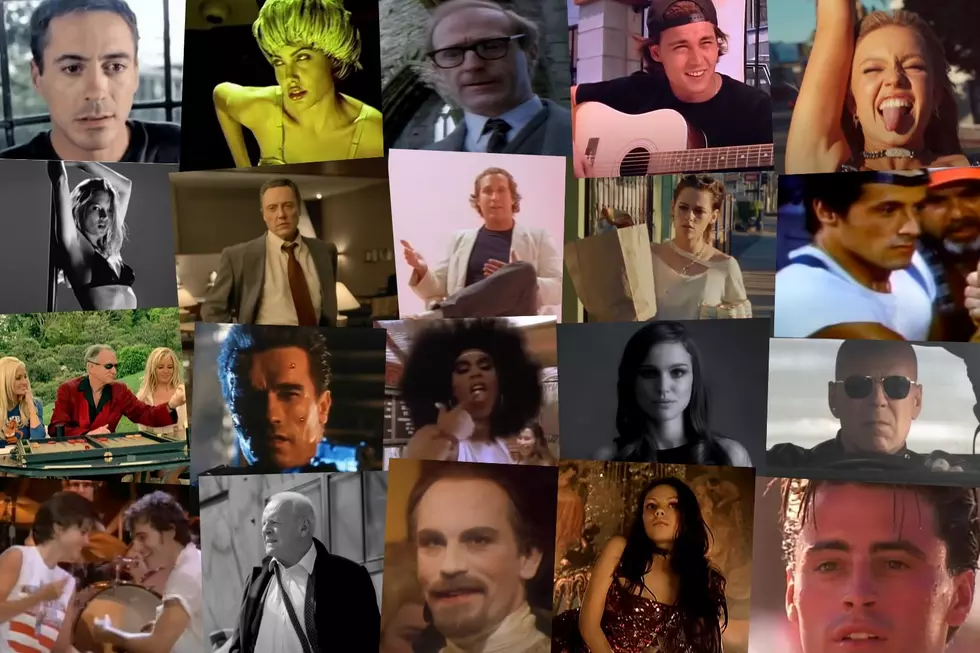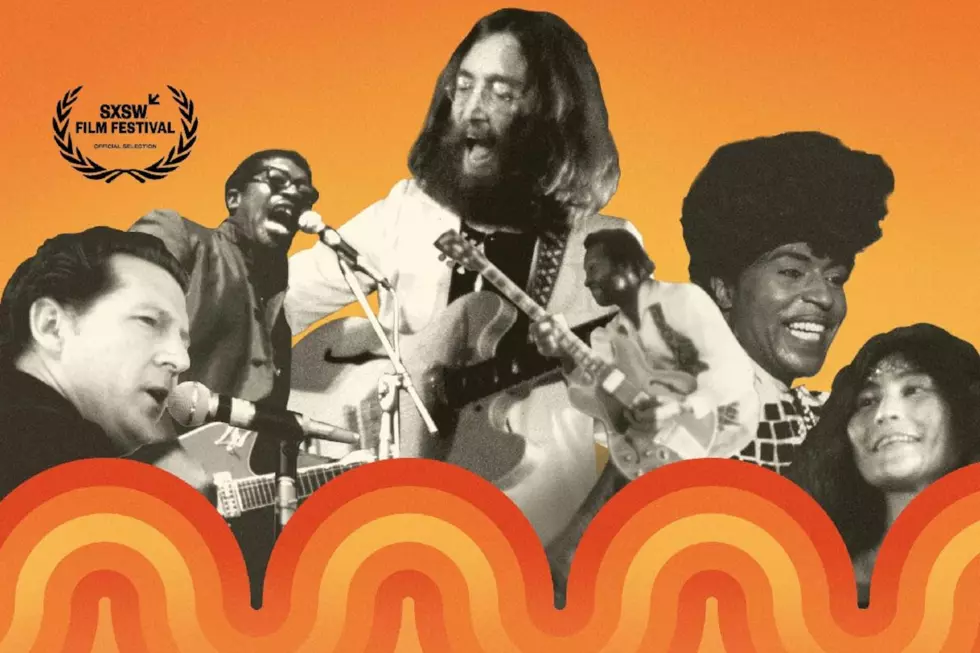
‘I Ain’t Never Losing': How Michael Larson Broke ‘Press Your Luck’
“We’re gonna have big bucks today, I can feel it.” That was the phrase uttered by host Peter Tomarken as he welcomed contestants to the game show Press Your Luck on May 18, 1984. Little did he know how accurate those words would become. By the end of the day a man named Michael Larson would walk away with over $100,000 in prize money, breaking the record for biggest sum won in a single episode of an American game show.
By all accounts, Larson was an average Joe, albeit one who was never fond of work. He spent time as an air conditioning repairman and ice cream truck driver, but rarely kept steady employment. In an interview with This American Life, James Larson, Michael’s brother, described him as the type of person who “didn’t understand the value of good, honest hard work.”
From an early age, Michael had gravitated towards get-rich-quick type scams. In middle school, he got in trouble for smuggling candy bars into class and selling them back to fellow students at twice the price. In adulthood, Larson spent hours watching infomercials that promised to make him fortunes. That is until he found a new obsession: game shows.
“Michael was so obsessed with his game shows and his televisions and whatever else he would do, it put a strain on our relationship,” recalled Larson’s common-law wife, Teresa McGlynn. “We had an entire wall full of 19-inch, 25-inch televisions. And he would watch them all at once.”
Whether due to intelligence or arrogance, Larson was convinced that he could find loopholes in game shows that other people missed. He dissected popular programs like The Price is Right and Wheel of Fortune, searching for any way to beat the system. For the most part, his efforts were in vain. Then, in 1983, Larson discovered a new show on CBS: Press Your Luck.
The structure of the show was simple. Contestants would answer trivia questions to earn spins. These spins would then be utilized to win cash and prizes on the show’s massive game board. The board used a randomized pattern to shuffle between 18 different highlighted squares. When a contestant hit their buzzer, they would win whatever prize was featured in the illuminated square. If they landed on the show’s trademark Whammy, they would lose all the money they’d won up until that point.
Designers of the game board believed the patterns to be completely random. Larson felt otherwise. After studying the show, he became convinced that the movements on the board could be predicted. “He was almost in a tranced state,” McGlynn recalled in the documentary Big Bucks: The Press Your Luck Scandal. “He would watch and count how many flashes went around the board.”
Larson spent more than six months watching and recording shows, studying tape and looking at every win and mistake. After analyzing countless hours of footage, he had a breakthrough. “He was like a kid at Christmas time," remarked McGlynn. "He was just so excited. He said ‘I’ve got it! I’ve got it!’”
Larson seemed to have uncovered patterns within the game board’s light sequence. He also discovered two squares that were never filled with a Whammy. By memorizing the sequences, he could assure himself of raking in big bucks. To prove his point, Larson played a VHS tape of one of the recorded shows. Sure enough, he was able to push pause every time the board landed on one of its cash prizes.
Convinced he had cracked the code, Larson decided to head to Los Angeles where the game show was filmed. With very little money to his name, he borrowed the cash to get him to California.
Of course, just making it to L.A. wouldn’t be enough. People aren’t put on game shows just because they show up. There’s a process where potential contestants are whittled down. In the case of Press Your Luck, auditions were held twice daily with 50 people scheduled per group. Michael Larson would have to convince the TV staff that he was worthy of airtime.
Bobby Edwards, the show’s contestant supervisor, remembered the day Larson came in. “He was smart. He answered the questions. He had a lot of energy.” Still, the TV veteran wasn’t convinced, claiming later that there was something about Larson that he didn’t trust. “I did not want to book him,” Edwards flatly remarked. The show’s executives felt otherwise. Larson would become a contestant. His episode would be recorded on May 19, 1984.
Larson’s fellow contestants that day were Janie Litras, a dental assistant, and Ed Long, a Baptist minister. Long was the show’s returning champion, having won $11,516 on the previous episode.
When the competitors met in the green room before the show’s taping, Litras sensed there was something odd about Larson. “Michael just seemed creepy," she later recalled. "He had a creepy smile, he just seemed like a creepy person. And I knew I could beat this creepy person.”
Once filming began, the show started much like any other. Host Tomarken greeted the studio audience and bantered with the contestants. Larson was all smiles during his introduction, giggling as he talked about his days driving an ice cream truck. The mild-mannered Ohio native just seemed excited to be there. The shirt he wore for his TV debut was purchased the day before from a thrift store for 65 cents. With the pleasantries out of the way, the game commenced.
During the first round of trivia questions, Larson didn’t fare well, only earning three spins to use on the first crack at the game board. As he stared at the giant flashing lights, he looked for the patterns he’d recognized at home. Timing would be crucial, as a second’s delay could result in the wrong square being illuminated. Larson waited for his moment, then hit the buzzer. On his very first attempt, he struck a Whammy. A perturbed Larson looked at the board. Had he been wrong? Were the calculations he’d made watching at home been incorrect? He had two spins remaining that round to figure it out.
The lights once again began dancing from square to square. Larson zoned in and pushed his buzzer. A box displaying $1,250 lit up. Delighted, Larson clapped. Perhaps his formula was correct after all. He had one more spin to make sure. Again the lights began to move. Larson waited, then pushed his buzzer one more time, again winning $1,250. He was out of spins for this round, but he’d gotten what he needed. The patterns were real.
Larson fared much better in the second round of trivia, answering several questions correctly and earning seven spins on the game board. In the second round, prize amounts increased. It’s also important to note that many cash prizes included a bonus spin, ensuring a player could continue their turn so long as they kept hitting the right squares.
Larson was the first contestant to spin in the second and final round. Confident that his memorized strategy worked, he began a run that would live on in television infamy. $4,000 and a spin. $5,000 and a spin. $1,000 and a spin. In just three turns, Larson had already made 10 grand. At this point, Tomarken pointed out that Larson was yet to lose a spin. The ice cream man from Ohio smirked and responded: “I ain’t never losing.”
A trip to Kauai. $4,000 and a spin. $500 and a spin. $700 and a spin. $1,000 and a spin. Larson had cleared $20,000 total and showed no signs of slowing.
Up in the show’s control booth, producers were taking notice. Something wasn’t right. The odds of hitting a Whammy were one in six spins. Even the luckiest of players should have hit a one by now.
“He could aim and hit, which we didn’t think as possible. And he continued to do it,” noted Darlene Lieblich, former CBS Program Practices Department Executive. “People were turning to me saying ‘Can we stop this?’. He wasn’t breaking any of the rules of the game. I could not stop the game.” Producers had no choice but to watch Larson racking up the cash. “We knew how to deal with every other situation, but all we could do with this is hang on for the ride.”
As his total continued to climb, Larson began to bask in the spotlight. He raised his hands when audience members cheered him on and screamed with glee each time another sum was added to his winnings.
Meanwhile, the people sitting closest to the player were in awe of what was going on. “He went into a trance. That’s the only way I can describe it,” Long said of Larson’s run. “You could sense the tension and the focus. It was almost like, how long can this go on?”
The third contestant, Litras, found herself getting jealous. “He kept winning and winning. And I just kept clapping and getting madder and madder.”
With each turn, the crowd got louder. Tomarken, sensing the tension in the room, continually reminded Larson that he was risking all of his winnings every time he went back to the board for me.
After pressing his luck for an unprecedented 40 spins of the board, Larson cleared the $100,000 plateau. At this point, he finally seemed content. When he passed his remaining spins to Long, the studio audience erupted in applause.
Finally it was time for another contestant to play the board. But fate has a strange sense of humor. Long struck a Whammy on his very first attempt.
Interestingly, Litras made a bold decision during her turns. After racking up a little over $9,000, the contestant decided to pass her three remaining spins back to Larson. Her strategy was sound. Just one Whammy and Larson’s score would be wiped, leaving the rest of his exploits for naught. It didn’t work. Larson survived the remaining turns on the board. When the episode finally ended, the ice cream man from Ohio had taken Press Your Luck for a record sum of $110,237.
Normally, the winning contestant would be invited back to defend their title on the next episode. That did not happen in Larson’s case. “We got a special call from the president of CBS thanking you for retiring,” Tomarken quipped at the episode’s close. He wasn’t kidding. Behind the scenes, show producers and network executives were already doing damage control.
“Virtually every department head at CBS gathered,” Lieblich recalled. “And the prevailing question was ‘How could we let this happen? What can we do about it? And, do we have to pay this guy his money?’”
The production team pulled the show’s tapes and began analyzing Larson’s movements, frame-by-frame. A few things stood out. First, the player appeared to celebrate early on several occasions, before it was clear what amount or prize he had won. Second, during Larson’s remarkable run, he landed on the same two squares 35 out of 40 times. Producers realized that Michael had discovered a pattern.
“There was a lot of attempted finger pointing. But this was one of these situation when, really, nobody was at fault,” Lieblich admitted. “We went over the release form with a fine-toothed comb. He fit every criteria. He had not broken any of the rules of the game. He had played fairly. He was an eligible contestant. We insisted that he was paid his money, which he won fairly and honestly.”
Bill Mitchell, Press Your Luck’s producer, was scared of what Larson’s success could mean for the future. “I was frightened of it. I thought he might ruin the show.” Still, even he could not fault the contestant’s impressive feat. “I think it was a David versus Goliath story. He slew us.”
Changes were immediately made to the Press Your Luck game board. Programmers added further sequences and patterns into the random automation system, ensuring that no other contestant could replicate what Larson had done.
Initially, CBS decided not to air Larson’s appearance, fearing it would make the network look bad. Eventually, they relented. Because of how long Larson’s streak lasted, the footage had to be split into two episodes. Part one aired Friday, June 8, 1984. The second episode aired on Monday, June 11. It earned the highest ratings in Press Your Luck’s history.
Larson took his winnings and headed back to Ohio. He claimed he would invest the money in real estate, but that plan was short lived. Instead, the game show winner continued looking for more opportunities to get rich quick. When a local radio station ran a contest offering $30,000 to any person who could provide a dollar bill whose serial number matched their randomly selected digits, Larson took thousands out of his bank account in single notes. The decision was a poor one. Not only did he not win the contest, but days later, his house was robbed. Over $50,000 in cash was stolen. The robbers were never found.
Larson would eventually run afoul of the law. His involvement with illegal lottery scams caught the attention of both the IRS and FBI. He fled from Ohio to Florida, where he would later die of cancer in 1999.
Meanwhile, Press Your Luck is receiving a reboot. As reported by Vulture, the gameshow is casting contestants for a return to the airwaves on ABC.
The Best Rock Movie From Every Year: 1955-2018
More From Ultimate Classic Rock


![Lisa Marie Presley’s Daughter, Riley Keough, Selling Historic $1.6 Million Home — See Inside! [Pictures]](http://townsquare.media/site/204/files/2024/05/attachment-riley-keough-house-pictures.jpg?w=980&q=75)






